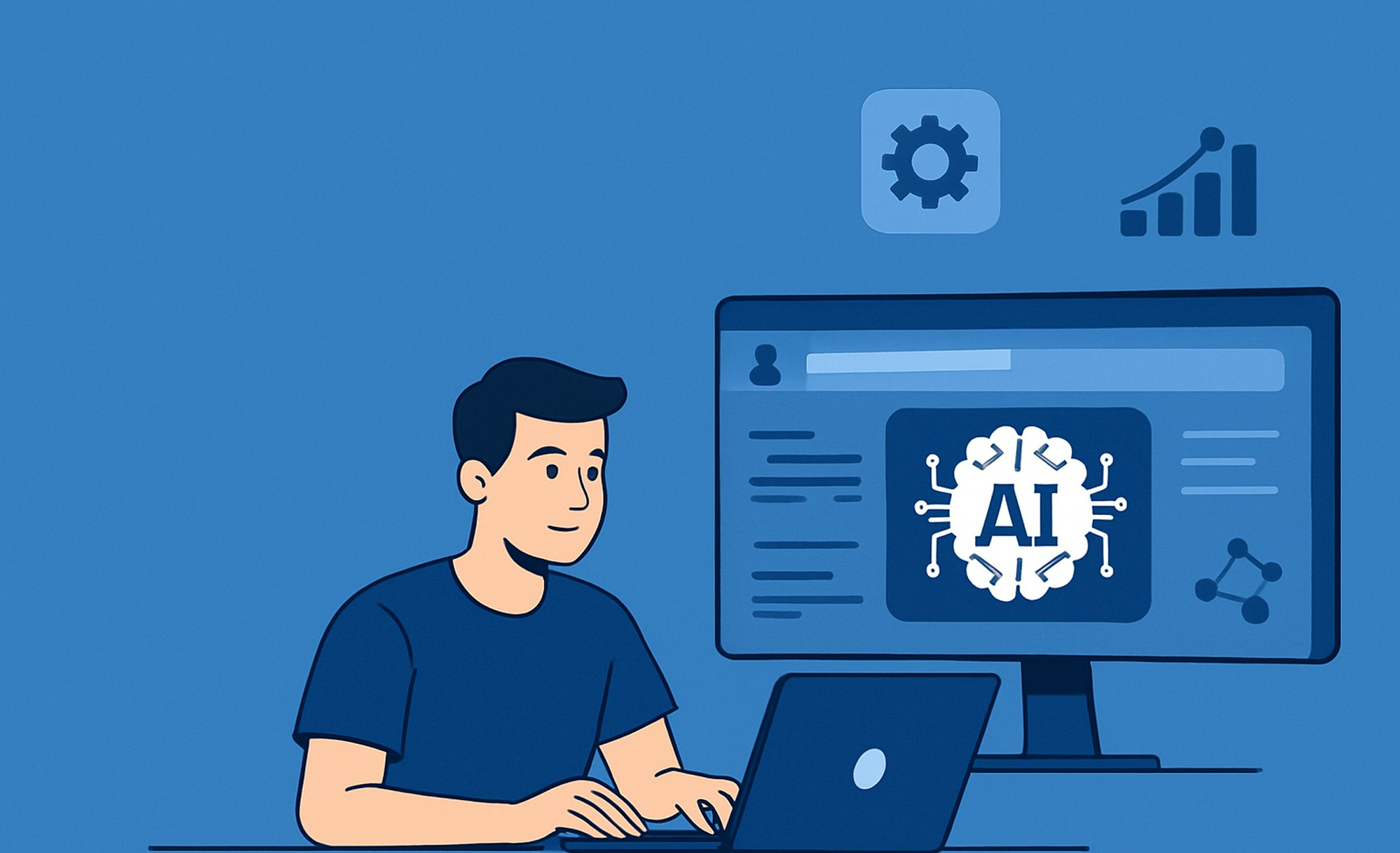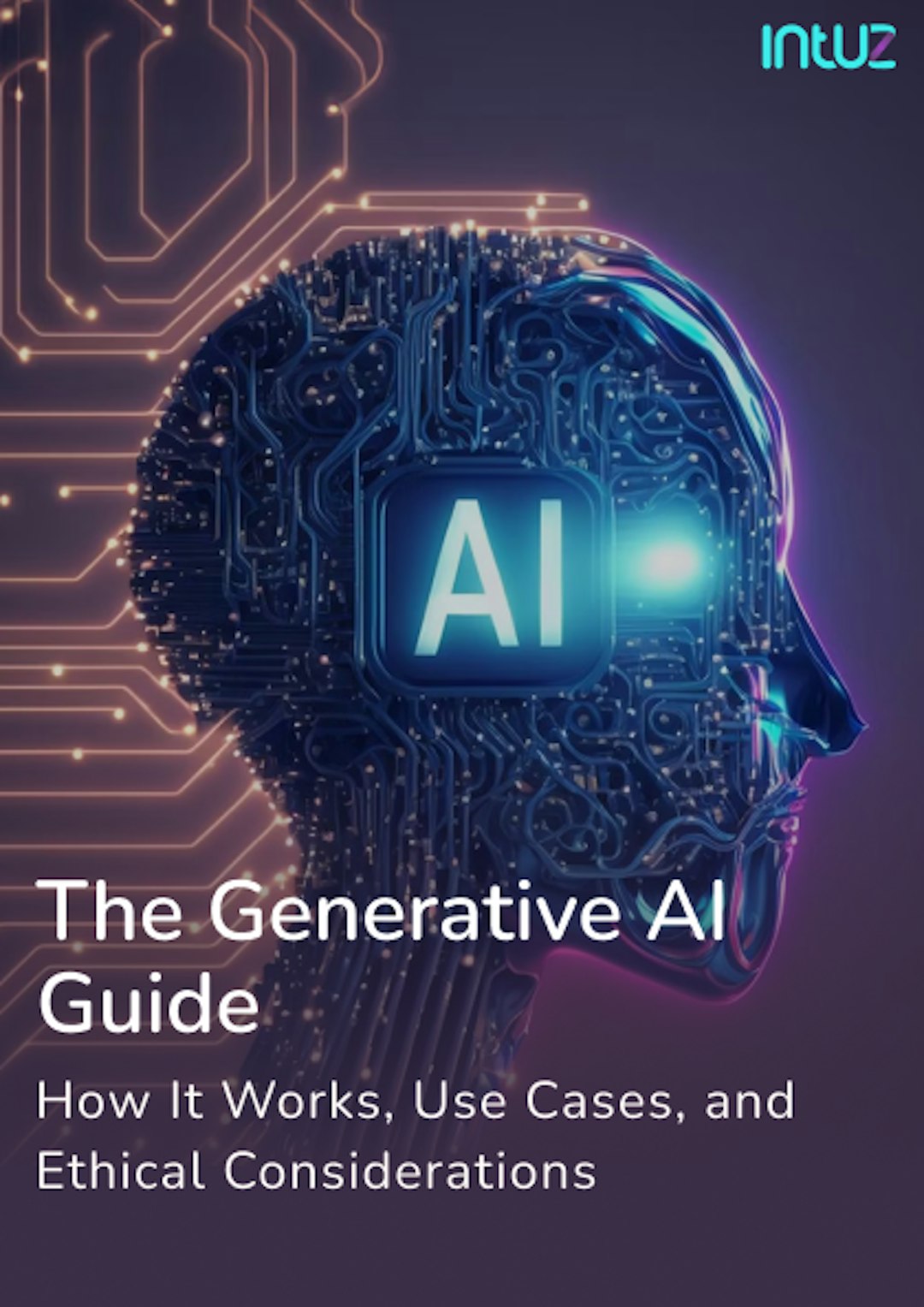Table of Content
A rapid rise in intelligent, self-learning software is evident across various industries.
Global organizations that once relied on static platforms are now leveraging AI-powered SaaS platform development to enforce enterprise‑grade security and compliance, manage vast multi-cloud environments, and enable change management at scale.
By 2026, more than 80% of enterprises are expected to have deployed AI-enabled apps in their IT environments. For Small and Medium Businesses (SMBs), too, the appeal is clear:
- Automation minimizes repetitive operational work
- Cost savings emerge as processes become more efficient and data-driven
- Personalization improves how a product fits into each customer’s workflow
The best part? All of this happens without the need to add more staff to handle growth. AI models do the heavy lifting behind the scenes.
How to Develop AI-Powered SaaS Platform
Unlike traditional SaaS products, an AI‑powered SaaS must do more than deliver features. It must continuously learn and adapt. The following steps will help you navigate this journey with clarity and confidence.
1. Pinpoint the core user problem and map AI to tangible value
Many SMBs rush into development with a list of features rather than validated pain points, which results in fragmented platforms that fail to gain traction.
Therefore, before investing time and money in building a SaaS platform, first understand the exact problem you want to solve and how it affects your target customers. Map operational bottlenecks within the workflows you intend to serve.
Let’s take your customer service function as an example.
- Is the team manually entering data into the system and making repetitive judgment calls, delaying support?
- Are customers waiting too long to speak to a live agent because the former is too busy handling even the smallest of inquiries on their own?
Once you understand these friction points, connect them directly to AI capabilities.
For instance, a Natural Language Processing (NLP) model can categorize and route inbound tickets, reducing first‑response time. Capegemini reports a 6.7% improvement in customer engagement and satisfaction in areas where AI is piloted or deployed.
Intuz Recommends:
Conduct a short discovery sprint. Interview 10–15 target users, shadow real workflows, and document where delays or errors occur to uncover high‑impact automation opportunities. Look for tasks high in frequency and low in complexity.
Top 15 AI Software Development Companies in USA
Explore Now2. Source and curate high‑quality data while staying compliant
What counts as quality data for SMB use cases? Data that is structured, labeled, and relevant to the problem you’re solving but recent enough to reflect current patterns.
For example, if you plan to develop a predictive model for sales forecasting, CRM data with consistent labeling and clear time stamps is far more helpful than unstructured notes in emails.
Here are several data sources to explore:
- User behavior logs from your current SaaS product or MVP
- Public datasets and open data portals relevant to your industry
- CRM and ERP records that show transactions, support interactions, or inventory trends
- Third‑party APIs that provide enrichment (e.g., market data, weather patterns, and demographic data)
Intuz Recommends:
- Our AI-powered SaaS app development company emphasizes having superior quality data, as the solution is only as strong as the data feeding it.
- According to Forrester, many transformation initiatives fail to deliver ROI because of poor alignment, lack of standard processes, and missed collaboration. The same issues often lead to inconsistent data collection, siloed information, and poor-quality data fueling critical systems.
- For SMBs, this risk is magnified as they can’t afford prolonged experimentation. Here’s how you can maintain high‑quality data and avoid those pitfalls:
3. Design a scalable SaaS architecture that powers AI features
The next step is to develop an architecture that supports both the SaaS experience and the AI components behind it. Here’s what you need to plan for:

a. Frontend layer
This is the interface your users interact with, typically built with React, Angular, or Vue. It should handle dashboards, notifications, and real–time updates without feeling heavy.
b. Backend layer
This layer manages business logic, API endpoints, and integration with your AI models. Languages like Python, Node.js, and Go are popular choices for scalable backends.
c. Database layer
This is a reliable store for user data and AI-generated insights. Many SMBs use MongoDB or PostgreSQL for structured and semi-structured data.
d. API layer
This is where your AI models interface with the rest of the platform. A clear separation between your SaaS features and AI inference services makes maintenance easier.
e. Cloud infrastructure
Providers like AWS, Azure, and GCP offer managed services, GPU instances, and built‑in scaling that reduce operational overhead.
Intuz Recommends:
Keep your AI models as modular services. For example, deploy a recommendation engine as its microservice with a REST or gRPC endpoint. This simplifies updates or retraining cycles and avoids entangling core SaaS features with AI workflows.
How Intuz Helped This AI SaaS Platform Client Enhance Case Management
CasePath sought to develop a SaaS web application for companies and agencies to deliver child protection and family welfare services. Here’s what our AI development company achieved for the client:
- Multi‑tenant architecture for secure workspaces and lower management overhead
- Dynamic form builder for quick process changes without new dev cycles
- Subscription model for predictable revenue and scalable usage
- AI‑driven case summaries to speed up reviews and decisions
4. Choose ML models aligned with your business use case
With your architecture planned, the next step is to choose the right Machine Learning (ML) models for your AI-powered SaaS platform. In our experience, SMBs benefit better from starting with proven model types that are well-documented and supported by cloud services.
To choose the best model type for your use case, check out the table below:
| Model Type | Typical Use Case | Strength | Considerations |
|---|---|---|---|
| Classification | Support ticket routing, fraud detection | Fast, well‑understood | Requires labeled datasets |
| Regression | Sales forecasting, churn prediction | Clear numeric outputs | Sensitive to outliers |
| Clustering | Customer segmentation, anomaly detection | Works with unlabeled data | Results can be harder to interpret |
| NLP | Chatbots, knowledge base search | Handles text data well | Needs significant preprocessing |
| Recommendation | Personalized dashboards, upselling | Boosts engagement | Needs continuous retraining |
Intuz Recommends:
While a highly complex deep learning model might provide better predictions, it can slow down response times. On the other hand, a simpler model wins when your internal team needs to maintain and iterate quickly. Run A/B tests with multiple models in parallel before committing to one.
5. Fine‑tune and iterate on your AI models for better accuracy
Selecting a model is only the starting point. To deliver consistent value, you need to fine-tune it so that it performs well on your specific business data and continues to improve over time. Therefore, start with a small dataset to confirm your chosen approach can solve the problem.
Feed the model with high-quality, cleaned, and labeled data. Monitor metrics, such as recall, precision, and F1 score, instead of relying solely on accuracy. Set aside a portion of the data to test how the model handles unseen cases, thereby preventing overfitting or model bias.
Lastly, package the model as a microservice or API and integrate it with your SaaS backend. PwC reports businesses that invest in continuous model training see 15%-20% better predictive performance within the first year.
Intuz Recommends:
While a highly complex deep learning model might provide better predictions, it can slow down response times. On the other hand, a simpler model wins when your internal team needs to maintain and iterate quickly. Run A/B tests with multiple models in parallel before committing to one.
6. Build intuitive SaaS features that seamlessly integrate AI
Once your AI foundation is in place, think of the core SaaS features you’d want in the platform. Outline every critical step, from onboarding to daily workflows. Key features to prioritize in custom AI solutions include:
- Onboarding: Simple signup, data import tools, and walk‑throughs that explain benefits
- Dashboards: Actionable insights with clear visuals and drill‑down options
- Analytics modules: Summaries, trend lines, and AI-driven recommendations that directly support decisions
- Notifications and alerts: Highlight exceptions or opportunities without overwhelming the target user
- Integrations: Connect with CRM, ERP, or payment platforms to fit naturally into existing workflows
Additionally, take the time to integrate AI where it feels natural. For instance:
- A chatbot on the support page that pre‑answers common queries
- Predictive insights directly in a sales dashboard, highlighting leads most likely to convert
- Personalized recommendations in an analytics module, showing which metrics to focus on
Businesses using AI-integrated SaaS platforms report a 40% reduction in time spent on manual tasks and a 30% decrease in errors.
Intuz Recommends:
Run usability tests early. Invite 5–10 real users and observe them as they complete key tasks, including how they utilize AI features. Utilize explainability frameworks, such as LIME or SHAP, internally so that your team can debug and improve model behavior. Add an in‑app feedback widget so users can suggest improvements while they work.
7. Set up MLOps to monitor, update, and scale your models
Once your models are live, they interact with dynamic data, changing user behavior, and evolving market conditions. Without a structured approach to monitoring and improving these models, performance will degrade and user trust can erode.
In fact, according to a McKinsey study, poor productization practices and the challenges of integrating models with production data and business applications contribute to the failure of ML models 90% of the time.

That’s why you need MLOps, the process of combining ML with DevOps principles, to ensure your AI features remain reliable, accurate, and cost‑effective. This will help you track performance metrics, such as precision, recall, latency, and data drift.
Intuz Recommends:
Set alerts whenever thresholds are breached so you can quickly make changes to the AI models. Also, don’t forget to budget time each quarter for a “model audit” session with your team.
Why Choose Intuz as Your AI‑powered SaaS Product Development Partner
If you’ve read this far, you’ll agree AI-powered SaaS platform development delivers excellent results. Still, you need a partner with sufficient experience to align your operational model with business outcomes.
Lucky for you, Intuz works on an outcome-first billing model, where every engagement is tied to measurable results, such as deploying a model, reducing cloud spend, or passing an audit. There are no hourly surprises: your team will know the spend before work begins.
“You also gain the advantage of real‑time collaboration at about 70% lower cost than hiring an equivalent on‑shore team. Our India-based team ensures live overlap with your workday for stand-ups, reviews, and unblockers, while working asynchronously outside of that window,” explains Kamal Rupareliya, CEO of Intuz.
All work is performed within your repositories and cloud, under your IAM policies, ensuring that your IP and data remain secure and compliant with data sovereignty requirements.
Additionally, work is delivered from an ISO 27001 audited facility with GDPR-compliant agreements, MFA-secured devices, and $2M in cyber liability insurance.
If you want to see these promises in action, book a consultation with Intuz today and discover how quickly your AI‑powered SaaS platform can move from idea to production.
About the Author
Kamal Rupareliya
Co-Founder
Based out of USA, Kamal has 20+ years of experience in the software development industry with a strong track record in product development consulting for Fortune 500 Enterprise clients and Startups in the field of AI, IoT, Web & Mobile Apps, Cloud and more. Kamal overseas the product conceptualization, roadmap and overall strategy based on his experience in USA and Indian market.







